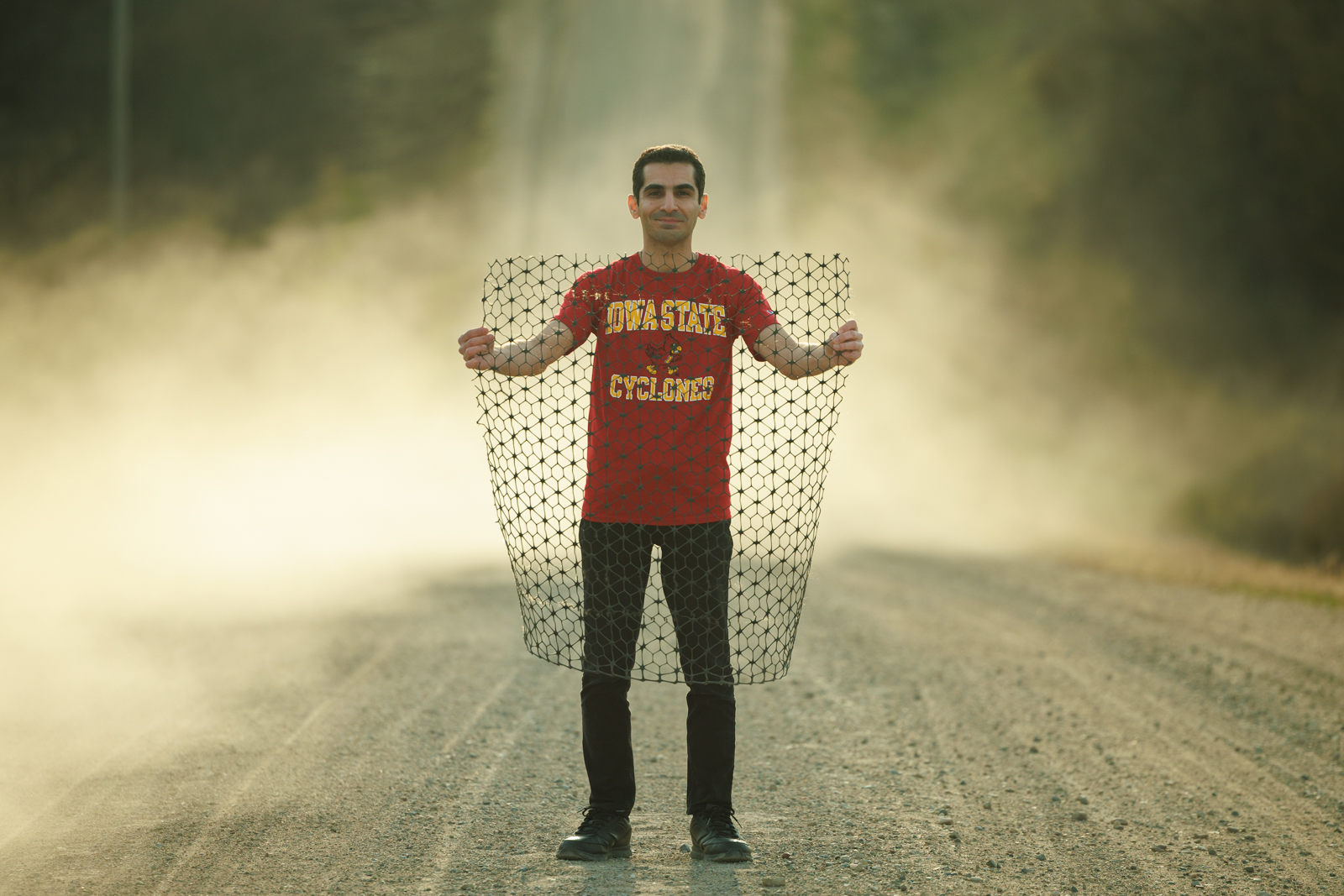Geogrids for gravel roads strengthen Iowa’s rural transportation infrastructure
Graduate student Araz Hasheminezhad is 3D printing geosynthetics to strengthen granular roads
Author: Anna Keplinger

Author: Anna Keplinger

Iowa is home to more than 71,000 miles of granular county roads. Though these unpaved roads typically carry low traffic volumes, they are essential to local communities and routinely bear heavy loads from farm equipment, construction vehicles, and service trucks.
Araz Hasheminezhad, a civil engineering graduate student with Iowa State University’s Program for Sustainable Pavement Engineering and Research (PROSPER), is addressing the challenge of maintaining these roads by 3D printing geogrids. Their web-like geosynthetic structures are made from recycled plastic to improve granular road performance and longevity.
Hasheminezhad, his research mentor Halil Ceylan, director of PROSPER and Pitt-Des Moines, Inc. Endowed Professor in Civil Engineering, and the PROSPER team have monitored a field performance test of a full-scale composite geosynthetic system in Buchanan County, Iowa.
This system includes a geogrid made from 100% recycled plastic bonded to a nonwoven geotextile, manufactured in collaboration with the geosynthetics industry. So far, the results have been promising: The geogrid’s webbed design enhances the stability of the road base, reducing rutting and lateral displacement over time, and significantly decreases the amount of base aggregate required to construct structurally sound gravel roads. These improvements could translate into major cost and time savings for counties.
“The composite geosynthetic is performing even better than we expected,” Hasheminezhad says. “After a heavy rainstorm and snowfall, we visited the test site to assess its performance in wet conditions. We found that the geogrid also improves drainage and moisture management.”
Although the project’s primary focus is infrastructure stability, sustainability has remained a guiding principle. Traditional 3D printing involves plastic filament that generates waste through material testing and iterative design. To reduce this environmental footprint, Hasheminezhad and his team sought to create a filament entirely from recycled plastic.
“One of the most time-consuming parts of the project was determining whether a 100% recycled plastic filament was feasible — and then finding a supplier capable of producing it,” Hasheminezhad says.
After nearly a year of searching, the team reconnected with one of their original contacts, who was finally able to provide a recycled filament. Once delivered, the material underwent extensive testing for durability, strength, and reusability.
“A bonus to this solution is that we’re transforming plastic waste into engineered geosynthetics — materials that would otherwise go to landfills are getting a second life,” Hasheminezhad says. “We even found a way to reuse the filament throughout the design testing process, reducing waste at every stage.”
Looking ahead, the team — supported by funding from the Iowa Highway Research Board and the Iowa Department of Transportation — plans to continue monitoring test sites and exploring scalable manufacturing solutions. Their long-term goal is to expand the technology’s reach to rural and urban roads across Iowa and beyond.
“We are exploring manufacturing possibilities because these geogrids have the potential to save time, resources and reduce plastic waste at local, national, and international levels,” Hasheminezhad says.
In 2025, Hasheminezhad received the Research Award from Iowa State’s Graduate and Professional Student Senate, which honors exceptional contributions by graduate students in their fields. Since beginning his PhD at Iowa State in 2022, he has also earned the 2024 Research Excellence (REX) Award, the 2024 Silver Award in the Federal Highway Administration’s student writing competition, the Best Paper Award at the 2023 Dam Safety Conference, and the Best Poster Award at the 2024 CCEE Student Research Showcase.
In addition to research, Hasheminezhad is passionate about teaching and mentoring. He serves as a teaching assistant for CE 4830/5830: Pavement Analysis and Design, and CE 3820: Design of Concretes. He hopes to pursue a faculty career after completing his PhD.
“My goal is to develop sustainable and resilient transportation infrastructure by using waste materials, helping conserve natural resources for future generations,” he says. “Teaching brings everything together. I learn from students as they learn from me, and together, we’re working to build a better future.”
